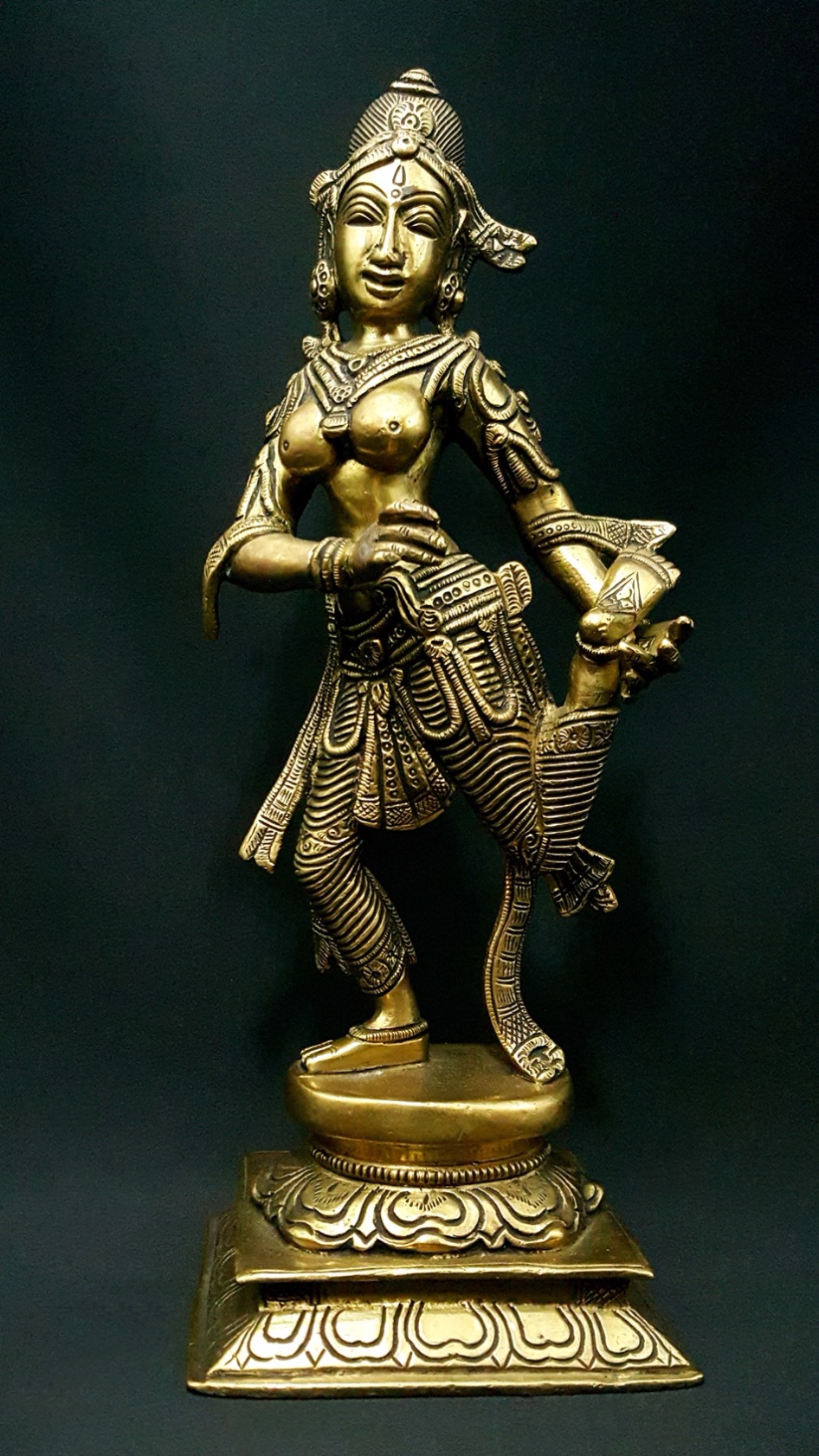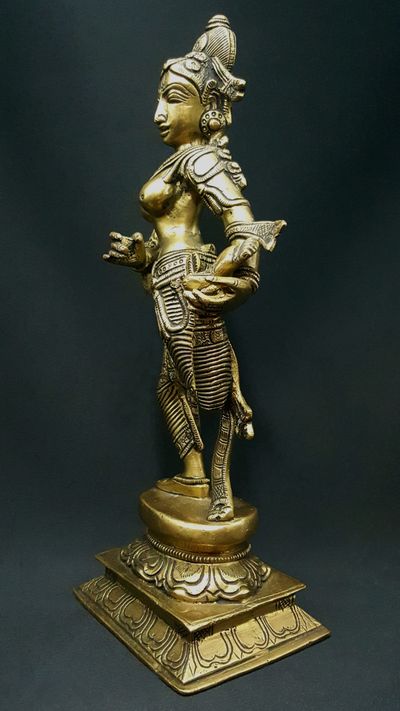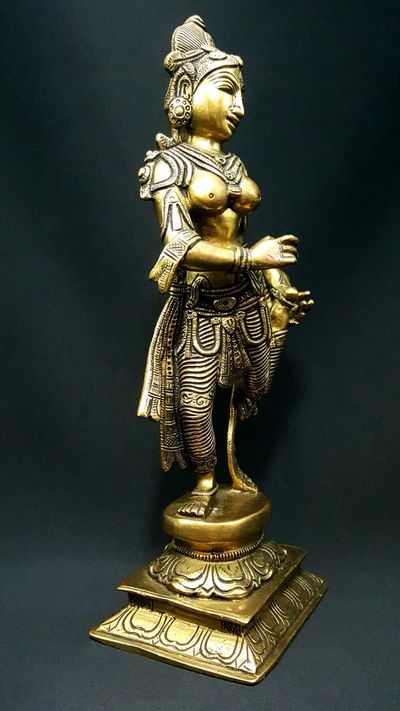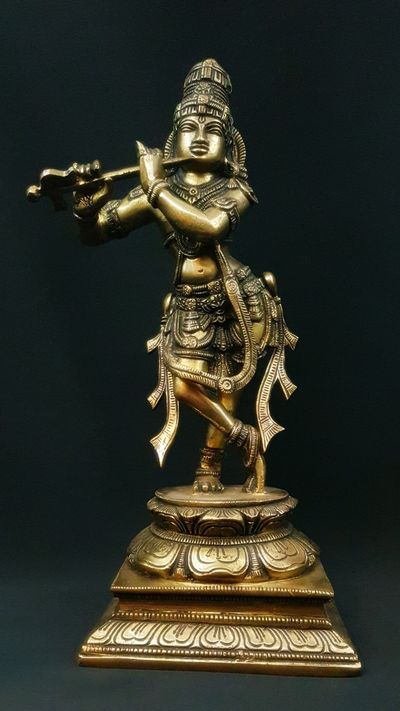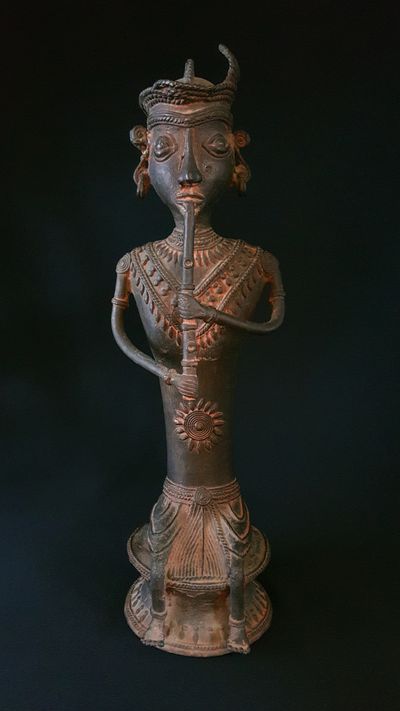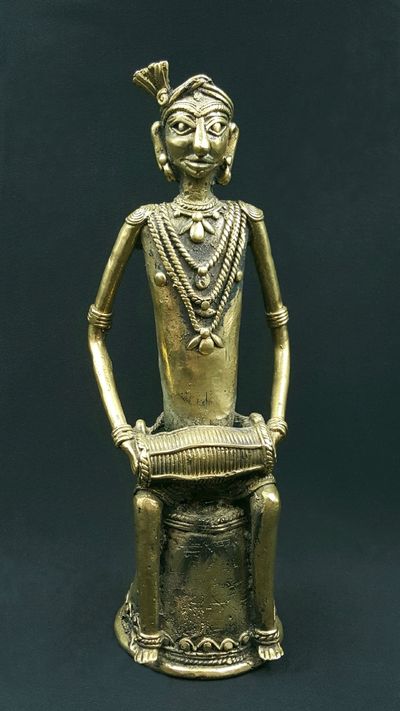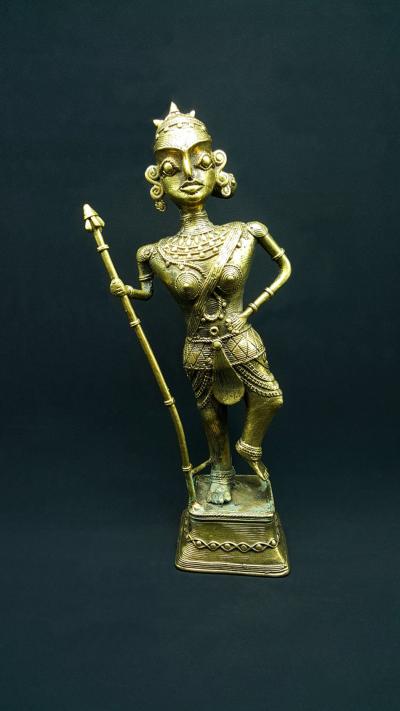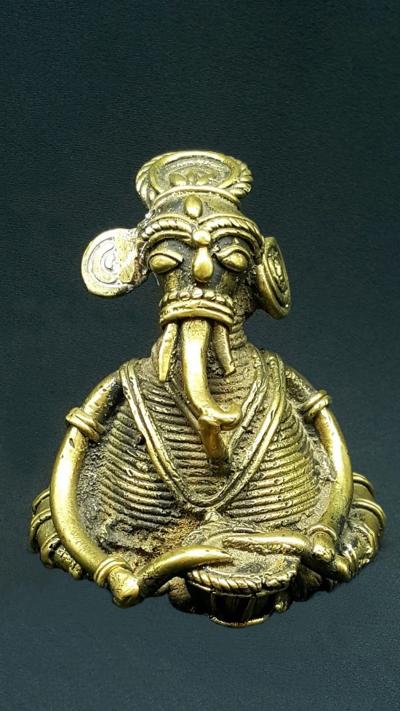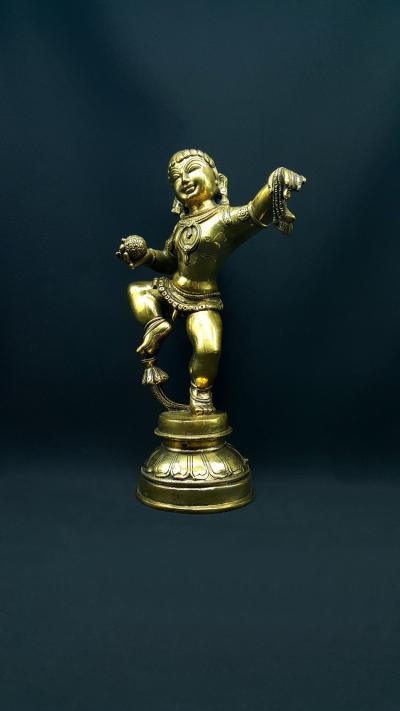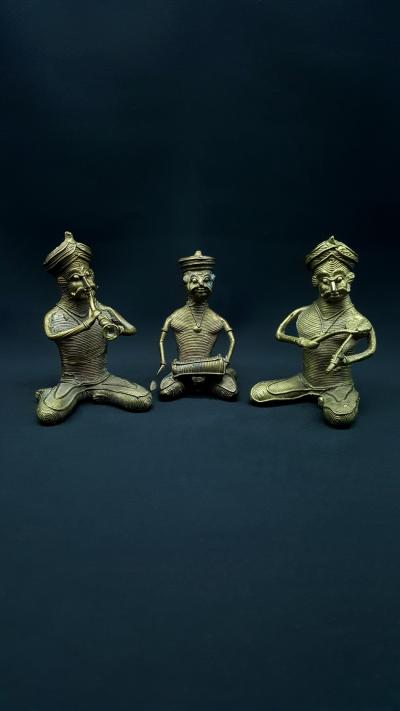Statue La danseuse magnifique
Grâce et élégance
€590.00
Cette statuette représente une danseuse de Bharata Natyam La posture suggère à la fois l’équilibre, la stabilité et le mouvement perpétuel qui anime la vie. En savoir plus...
Hauteur : 31,5 cm
Poids : 2,99 Kg
Art sacré
Technique de la cire partielle - Alliage cuivreux
Origine : Delhi - Inde
Livraison gratuite UE, Norvège et Suisse
Description
Cette danse, ce mouvement suggère à la fois l'équilibre, la stabilité et le mouvement perpétuel qui anime la vie.
La danse en Inde
La danse revêt une importance primordiale en Inde, c'est un art noble, l'art créatif par excellence et on en retrouve des traces dans les traités sanscrits de plus de 2000 ans. Il existe aujourd'hui six formes de danses traditionnelles : le bharata natyam, le kathak, le kathakali, le manipuri, le kuchipudi, l'odissi. Mais la danse est aussi très présente au quotidien dans les villages lors des fêtes qu'elles soient religieuses, folkloriques ou civiles et bien sûr au cinéma !
La danse classique est intimement reliée au sacré : c'est un moyen de transmettre les Védas, les enseignements religieux au plus grand nombre. Tous les gestes des danseurs sont donc extrêmement codifiés et revêtent un message précis, l'apprentissage est long et difficile.
Posture Debout - légèrement fléchie - poids reposant sur une seule jambe. La jambe gauche, repliée, est maintenue par le bras gauche au niveau de la cheville.
La posture est gracieuse, suggérant à la fois l'équilibre et le mouvement.
Coiffure Typique, cheveux relevés en chignon (keshabanda) et garnis de quelques bijoux discrets.
Parure La danseuse est simplement vêtue d'un pantalon richement orné de multiples bandes de tissus ainsi que d'une ceinture large dont les pans virevoltent de chaque coté. Deux brassières soulignent aussi le mouvement de la danse. L'ensemble est finement ciselé avec force détails.
Bijoux Richement dotée, cette danseuse portent de nombreux colliers, bracelets (bras et chevilles),boucles d'oreilles et coiffe finement ciselés.
